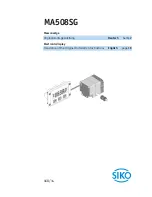
10
(10) Receiver Information
This section indicates the status of the connected receiver with the following items:
Receive Frequency
Receive mode
Tuning Frequency Step
RF Attenuator on/off
(
12) Signal Display (13) Signal level indicator
Received frequencies are plotted on the horizontal scale and signal strength on the
vertical scale, showing the overall effect of signal activity over the given frequency span.
The bottom horizontal line is the ‘baseline’. When signals are entered, they produce
vertical lines, and the higher the line, the stronger the signal. A 60 dB range is provided
by the scale which is divided into 10 dB increments.
5-2 Main Control Keys
Function key:
The
Function
key is located on the top right of the control keys. When the function key is
pressed followed by certain keys, they serve a secondary function. The secondary function
is printed above the respective key. While the function key is pressed, the reversed
FUNC
yellow icon appears on the top left corner of the screen.
Numeric keys (0 ~ 9, decimal):
The numeric keys are used for entry of the start frequency, end (stop) frequency, input level
setting, trigger level setting, and so on.
While entering from the numeric keys, the
CLR
key may be used as a backspace key to
correct the entry. To delete all entry, press the
CLR
key while holding the
FUNC
key.
5-3 Default Mode
Pressing the CLR key repeatedly, will cause the SDU5600 to be set to the default mode with
the following settings:
Marker Mode:
Frequency readout
Calculation mode:
None
Waterfall :
None











































